Then & Now
Where We’ve Been 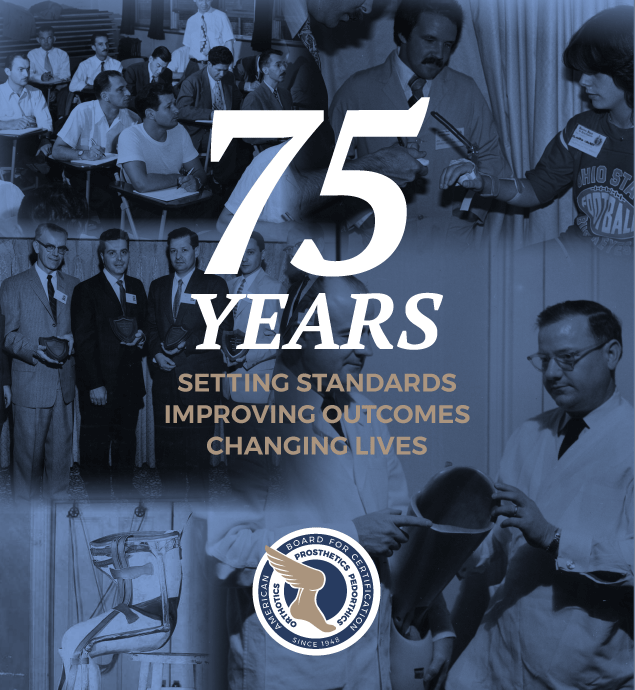
A Look at ABC’s History
At age 75, ABC is looking pretty good and is nowhere close to retiring. From modest beginnings to exciting growth, we’ve had a rich history – some of which you might not know.
Seventy five years ago on September 9, 1948 formal articles of incorporation were filed on behalf of a small group of orthotic and prosthetic practitioners and orthopedic surgeons to establish the nation’s first O&P standard setting organization. With the post-World War II demand for O&P services at an all-time high, these leaders recognized the need for an organization to set clinical standards, further professionalism and begin the process of establishing the O&P practitioner as a member of the allied health community.
Motivated to take action, this group formed the American Board for Certification of the Orthotic and Prosthetic Appliance Industry (ABC). As the organization was established, so too was its mission “…To encourage and promote the high standards of workmanship and service…” Although the size, scope and name of ABC have changed in its seventy-five years, the organization’s early mission still rings true today.
The Early Years
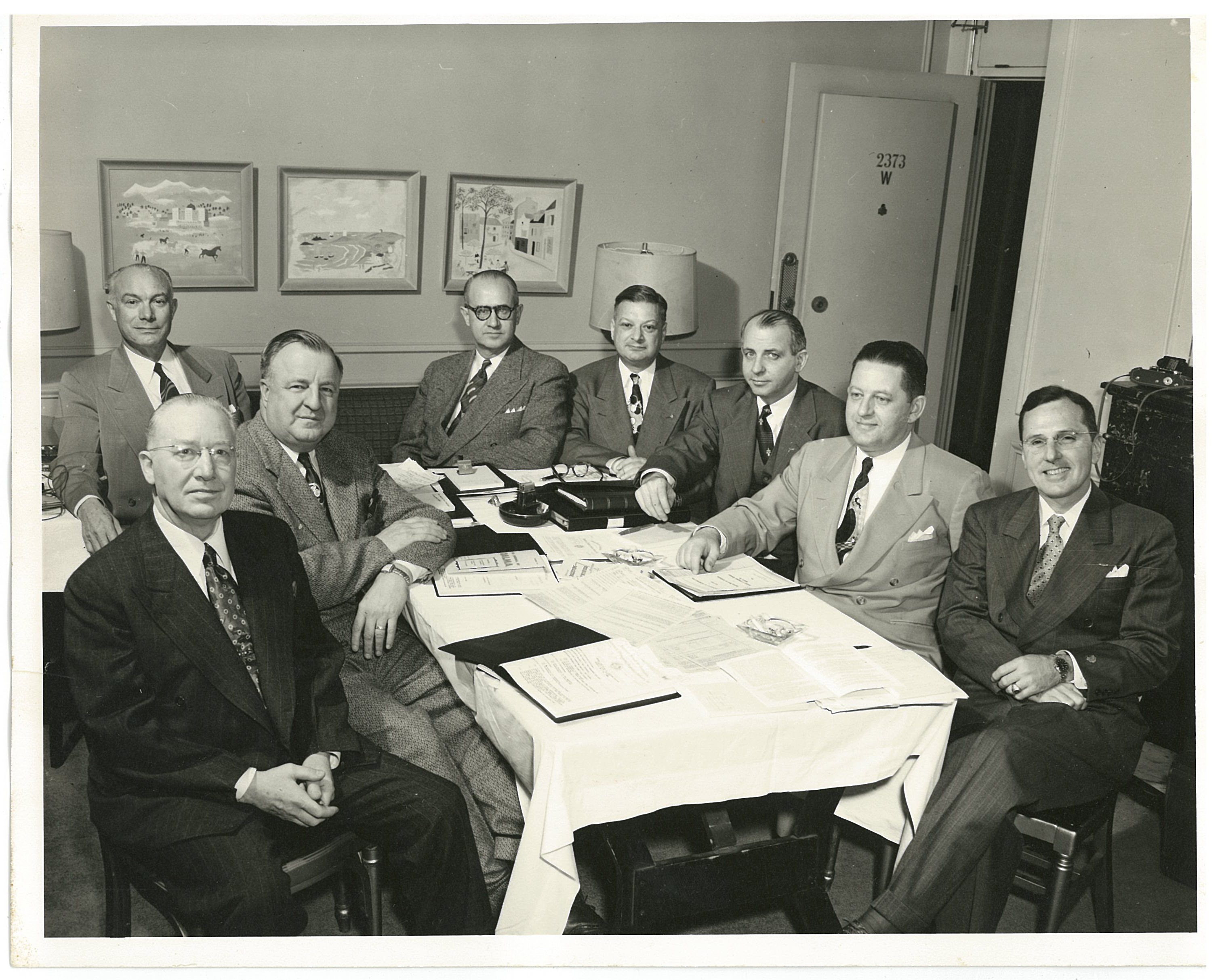
The first board of directors meeting was convened on December 11, 1948. This initial board was comprised of President Chester E. Haddan, CPO, three orthopedic surgeons and three O&P practitioners.
Early on, ABC was enthusiastically accepted by the O&P community and in just three months from inception over 112 firms (facilities) and 252 fitters (practitioners) had submitted applications for ABC accreditation and certification, respectively.
One of the board’s first critical decisions was to determine what they would call the O&P professionals that would abide by the ABC standards. At that time, common vernacular labeled all O&P professionals as fitters. However, the board elected to establish the terms Certified Orthotist and Certified Prosthetist for those who met ABC’s requirements.
Promoting O&P education was central to the early goals of ABC. As such, during a September 1949 board meeting, ABC established the Advisory Committee on Educational Standards and determined that an examination would be required for certification.
The first of these exams was held on March 3, 1951 in New York City. Later that year, additional exams were held in Atlanta, Los Angeles and Chicago. By year’s end, 67 applicants had sat for ABC’s certifying exams and 51 of those passed
to become ABC certified.
A Time for Change
The board amended the organization’s name for the first time in 1959, dropping the term appliance industry and adopting the more familiar title of the American Board for Certification in Orthotics & Prosthetics, Inc. – a name that served ABC for 48 years.
In the late 60’s and early 70’s, an active ABC Board of Directors established a number of policies relating to ethics and education. The ABC Character and Fitness Committee (now the Professional Discipline Committee) was created in 1968 to review ethical misconduct and oversee a consumer complaint process. One year later, ABC published a revised Canons of Ethics (today’s Code of Professional Responsibility and Rules & Procedures).
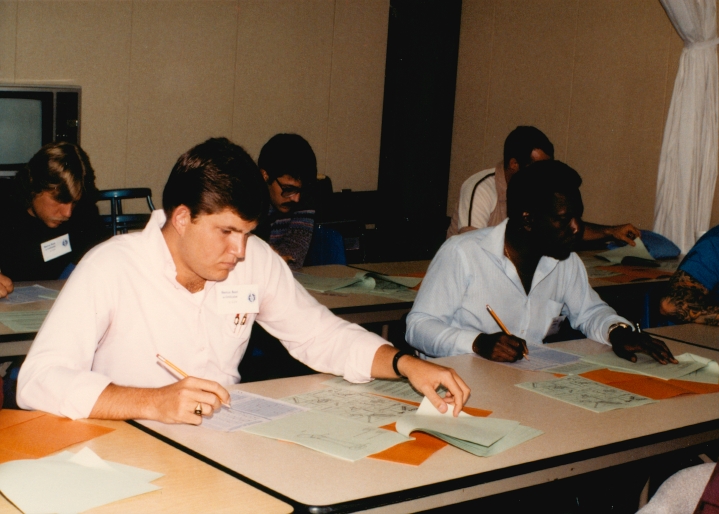
In 1970, realizing that the need for more continuing education options was important to both ABC and the profession as a whole, ABC and the American Orthotic & Prosthetic Association (AOPA) sponsored the establishment of the American Academy of Orthotists and Prosthetists (AAOP).
Two years later, the ABC Continuing Education Policy Committee was created. This group recommended the establishment of continuing education requirements for all ABC Certified Practitioners and gradually phased these requirements in over the next 10 years.
Following three years of debate, the 1973 ABC Board of Directors approved a historic change in the certification eligibility criteria. It was determined that a high school diploma would no longer be sufficient for certification, and that only candidates possessing a minimum of an Associate of the Arts degree in orthotics and/or prosthetics would be eligible for the ABC certification exams.
Modernizing the Profession
During the 1980’s, the ABC board elected to add two new credentialing programs – the Certified Orthotic and Prosthetic Technician in 1980 and the Certified Orthotic and Prosthetic Assistant in 1989.
In 1986, thirteen years after approving the requirement of an associate’s degree for orthotists and prosthetists, the ABC board raised the minimum educational standard to a bachelor’s degree for practitioners and allowed for a 10-year phase-out of the associate’s degree requirement.
ABC’s responsibility for overseeing primary O&P education was passed on in 1991 to the newly created National Commission on Orthotic and Prosthetic Education (NCOPE). One of the first tasks of NCOPE was the establishment of O&P residency programs, which were soon recognized by ABC and integrated into their certification requirements.
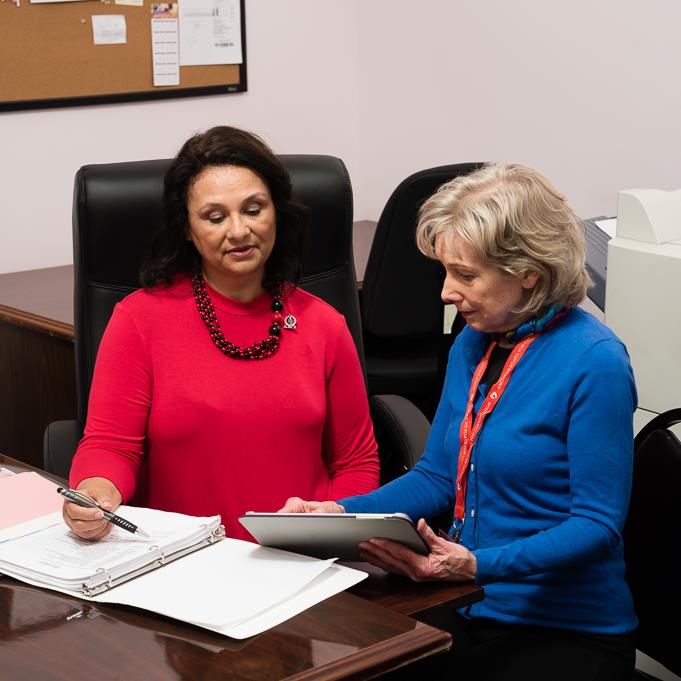 In the early 90’s, overhaul of the ABC Facility Accreditation Program
began. As reported in ABC’s 1993 Annual Report, ABC “recognized the need to look more closely at the (accreditation) standards used to define quality of care. It is not limited to the physical capability to deliver services, but incorporates
processes of patient diagnoses, treatment and outcomes.”
In the early 90’s, overhaul of the ABC Facility Accreditation Program
began. As reported in ABC’s 1993 Annual Report, ABC “recognized the need to look more closely at the (accreditation) standards used to define quality of care. It is not limited to the physical capability to deliver services, but incorporates
processes of patient diagnoses, treatment and outcomes.”
To meet these goals, new standards were developed and an onsite survey became mandatory.
Inauguration of the modernized program took place in December 1995, when less than 800 O&P patient care locations were ABC accredited.
Spurred by a desire to provide credentialing options for all O&P professionals, the ABC board unanimously voted in 2002 to create orthotic and mastectomy fitter credentialing programs. Thousands of professionals applied for the new certification programs in subsequent years, validating the viewpoint of the board that standards programs and credentialing services were needed and desired for professional providers of non-custom orthotic devices and post-mastectomy prostheses and products.
Four years later, ABC added a Certified Fitter of Therapeutic Shoes program for providers of non-custom diabetic footwear and inserts.
Legislation passed by the United States Congress in 2003 required the Centers for Medicare/Medicaid Services (CMS) to strengthen the rules and regulations governing providers of Durable Medical Equipment, Orthotics, Prosthetics and Supplies (DMEPOS). This legislation mandated quality standards and facility accreditation for many specific providers. The ABC Board of Directors, seeing this as an opportunity to expand the influence of ABC standards and accreditation, directed the organization to seek recognition from CMS as a Deemed Status Accrediting Organization. This status was attained in 2006.
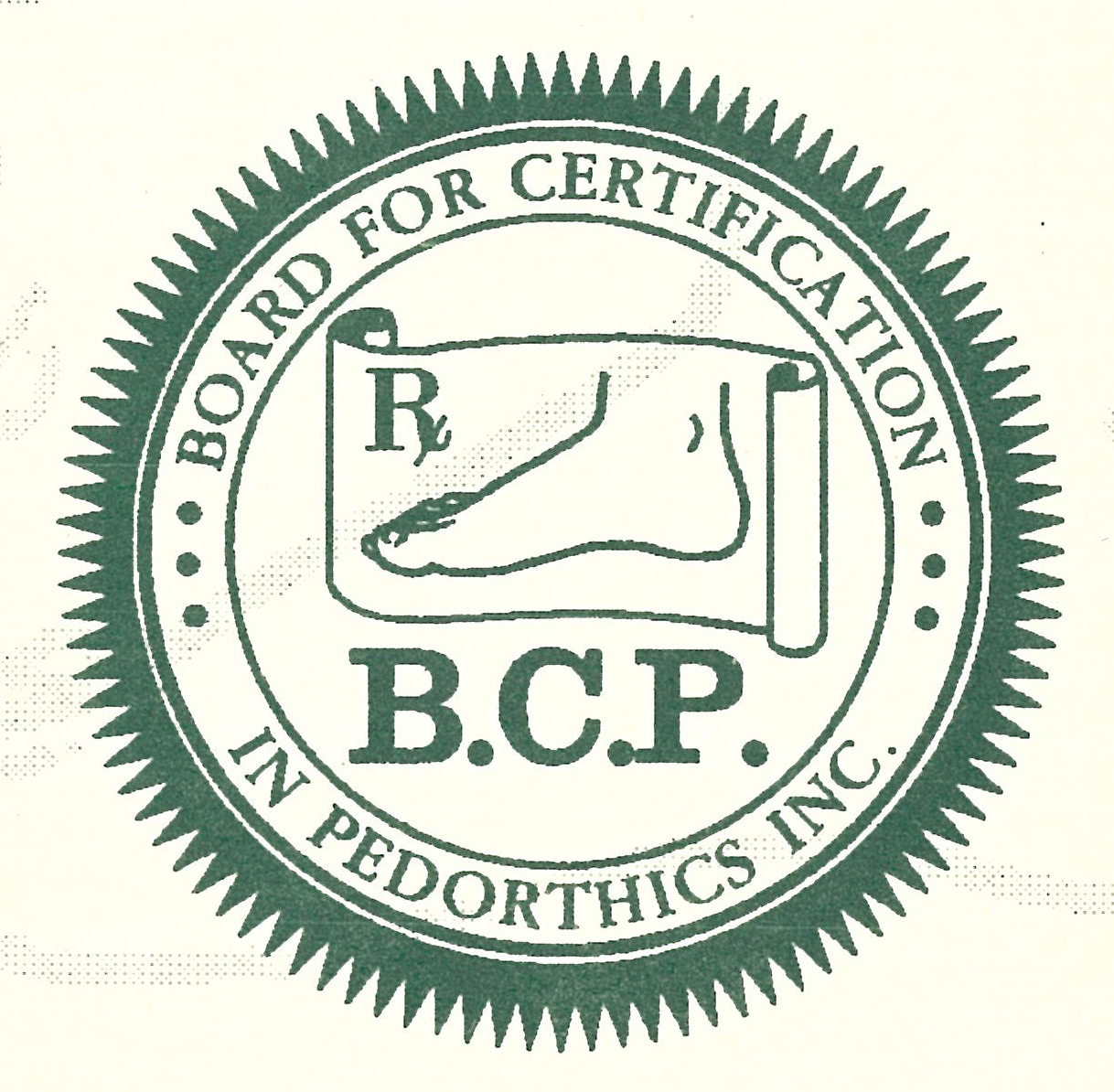 Following a vote by Certified Pedorthists represented by the Board for Certification in Pedorthics (BCP), the BCP was integrated
into ABC on January 1, 2007. This integration brought more than 2,500 Certified Pedorthists to ABC, and for the first time joined together all orthotic, prosthetic and pedorthic professionals under one standard-setting organization.
Following a vote by Certified Pedorthists represented by the Board for Certification in Pedorthics (BCP), the BCP was integrated
into ABC on January 1, 2007. This integration brought more than 2,500 Certified Pedorthists to ABC, and for the first time joined together all orthotic, prosthetic and pedorthic professionals under one standard-setting organization.
In 2009, The International Society for Prosthetics and Orthotics (ISPO) awarded ABC and NCOPE its highest level of recognition, Category I. With this recognition the ABC/NCOPE CPO pathway is recognized throughout the world as having met the highest international educational standards in existence today. ABC is the only credentialing body in the United States to receive Category I recognition from ISPO.
With ABC’s support, NCOPE revises the orthotic and prosthetic education standards in 2010, raising the minimum education level for the profession to a master’s degree in both Orthotics and Prosthetics.
Another addition to ABC’s credentialing programs came in spring of 2013 with the establishment of its Central Fabrication Accreditation, created to ensure that the entire continuum of care is represented by ABC accreditation programs, offering O&P business owners the assurance that those central fabrication facilities they partner with are held to the same level of standards that they have already met.
As of Late
In 2015, we took a significant step forward by introducing Digital Badges, revolutionizing how credential holders can showcase their accomplishments and expertise across various platforms, including social media, emails, websites and electronic resumes.
In 2017, we reached another milestone with the opening of a new testing center in Tampa, Florida. This is where aspiring students undergo testing to earn their certifications. In alignment with our dedication to excellence, Tampa hosts quarterly testing sessions for those who wish to be certified by ABC.
The year 2018 marked a momentous occasion as we welcomed Deborah M. Plescia, CPO, as the first female President of the Board of Directors.
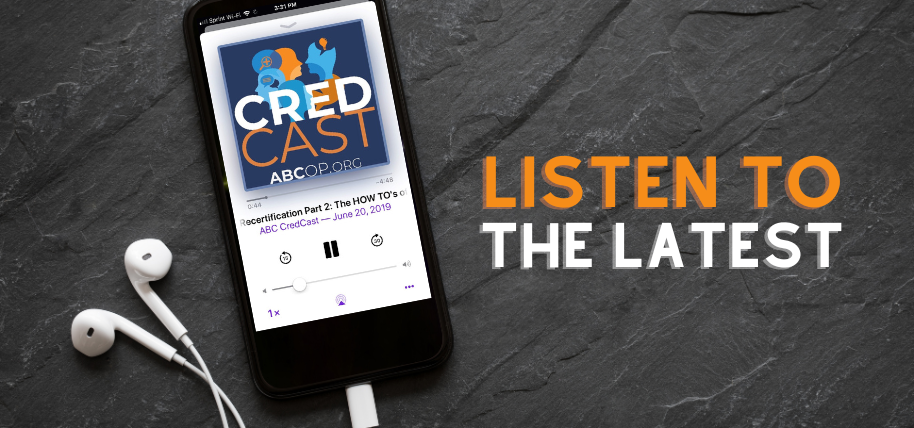
That same year, we also launched our CredCast podcast and have interviewed over 40 guests and produced nearly 50 episodes.
To listen to the latest episodes or to subscribe to CredCast, visit our podcast library.
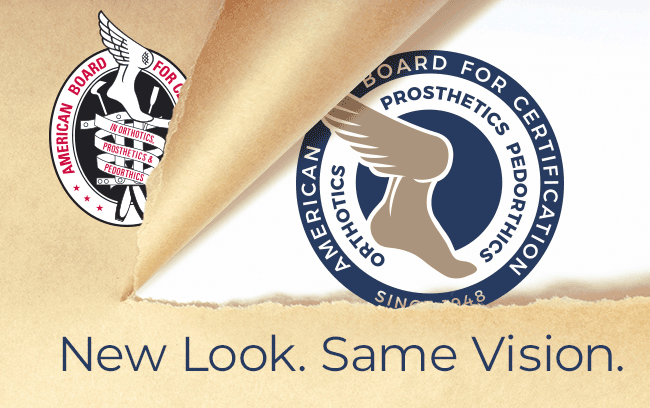 2019 was a big year for ABC. We updated our logo to reflect a current and modern profession. “The new logo provides a resh ook for a 75-year-old standard bearer. It represents our ability to embrace the need for change while still honoring the past.” - Deborah M. Plescia, CPO, 2018 Board President. Also, during this year, we combined the practitioner written exam to cover both orthotics and prosthetics. This change gives candidates the opportunity to take the exam while their university knowledge is still fresh and provides educators with measures to evaluate the success of their curriculum.
2019 was a big year for ABC. We updated our logo to reflect a current and modern profession. “The new logo provides a resh ook for a 75-year-old standard bearer. It represents our ability to embrace the need for change while still honoring the past.” - Deborah M. Plescia, CPO, 2018 Board President. Also, during this year, we combined the practitioner written exam to cover both orthotics and prosthetics. This change gives candidates the opportunity to take the exam while their university knowledge is still fresh and provides educators with measures to evaluate the success of their curriculum.
Where We're Going
Career Awareness
In 2021, we launched the WhatIsPOP Career Awareness Initiative with the goal to educate, excite and encourage future OP&P (POP) professionals. With a dedicated WhatisPOP website, organization partnerships and lots of help from our volunteer POP Ambassadors, we have been busy spreading the word over the last few years. To learn more, visit our Career Awareness page.
Scholarships 
In 2022, we committed $1 million to OP&P student scholarships. “We are thrilled to be able to support the future of OP&P through these scholarships and awards, including specific support for students from as many backgrounds and perspectives as possible. As our amazing profession continues to grow, so too does our voice and ability to make a difference,” - Brett Saunders, CPO, FAAOP, ABC President 2022. More details about our scholarship opportunities are available here.
Adapting to the Needs of the Profession
We are continually evaluating the state of the profession and making needed changes to our programs and services as well as participating in activities to advance the profession and improve patient care.
ABC’s 75 years has truly made it the organization it is today with over 12,000 certified individuals, nearly 5,000 accredited facilities and close to 160 inspiring volunteers and staff who continue to contribute to the growth and success of ABC and the O&P profession.







